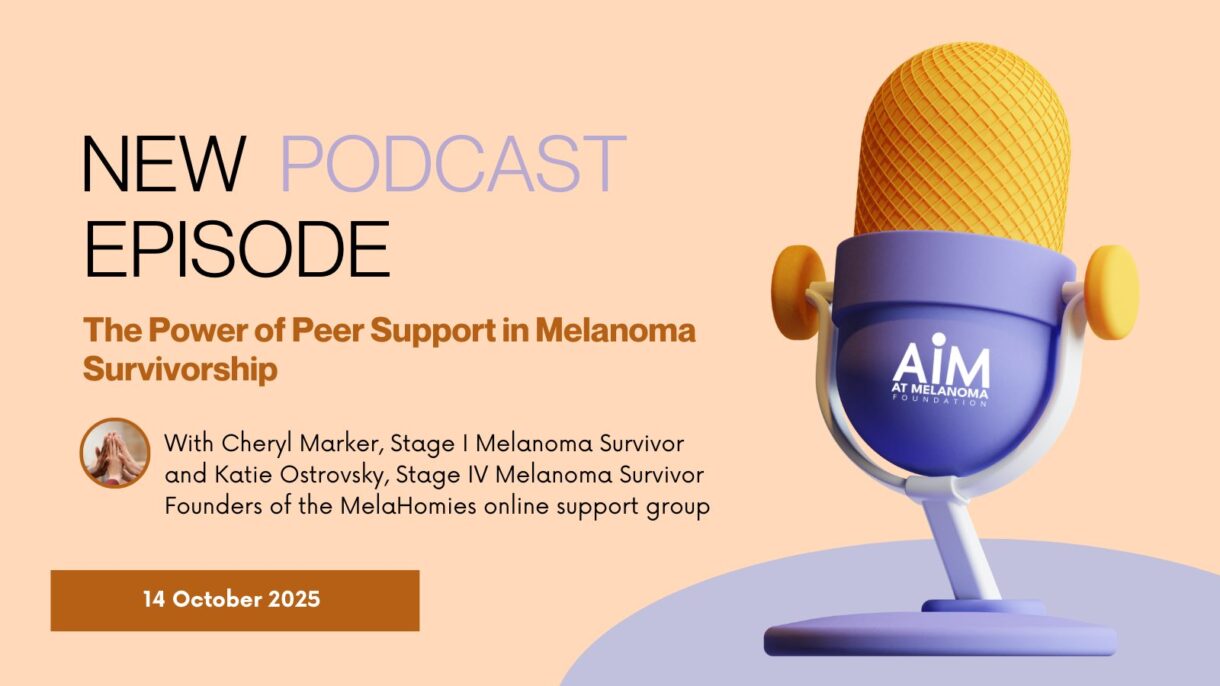The Power of Peer Support in Melanoma Survivorship

A melanoma diagnosis can turn life upside down in an instant. While doctors focus on staging, biopsies, and treatment plans, patients are often left with unanswered questions about how to actually live with cancer. That gap is where peer support becomes not just helpful, but essential.
In this episode of Beyond the Clinic: Living Well with Melanoma, host Dr. Samantha Siegel sat down with two members of the Mela Homies — a grassroots community built by and for melanoma survivors. Their stories reveal both the challenges of survivorship and the healing power of connection.
Cheryl’s Story: Seeking Answers, Finding Community
Diagnosed with Stage I melanoma in 2023, Cheryl Marker remembers how unprepared she felt when her pathology results came. Instead of clear explanations from her care team, she found herself turning to Google — and eventually to online groups like the Stop Melanoma Movement and the MelaHomies.
For Cheryl, the community provided not only emotional support but also practical education. Other survivors could explain terms like Breslow depth and share what to expect from a sentinel lymph node biopsy. What her medical providers hadn’t explained, peers helped make clear.
Katie’s Story: From Stage Four to Building a Movement
Katie Ostrovsky is a Stage IV survivor who has been cancer-free for 11 years, after enduring surgeries, chemo, immunotherapies, and radiation. For years, she stayed quiet about her journey, overwhelmed by the trauma of treatment. But on her five-year cancer-free milestone, she realized she needed to speak her truth.
What began as a personal Instagram page evolved into a thriving online community. By 2020, Katie helped launch the MelaHomies, a space for melanoma patients and survivors to share their stories, connect, and lift one another up.
“They helped me heal, and I helped them heal,” Katie says. “That human connection is what we all need — especially when family support, as loving as it may be, can’t fully capture what it feels like to live through melanoma.”
The Ongoing Journey of Survivorship
Both Cheryl and Katie highlight a reality often overlooked: survivorship does not end with the words no evidence of disease. Patients face ongoing anxiety with every dermatology visit, grapple with the long-term side effects of treatment, and often struggle to get insurance to cover appropriate follow-up care.
That’s where peer communities like the MelaHomies fill the void — offering encouragement before skin checks, sharing trusted resources, and reminding survivors they’re not alone.
Moving Forward
The conversation underscores an urgent need for:
- Better communication from healthcare providers at the time of diagnosis.
- Integration of survivorship care into the medical system, not as an afterthought.
- Recognition of peer support as a powerful complement to medical care.
The MelaHomies prove that community can be medicine. By fostering connection, they’ve created a lifeline for people navigating melanoma — and a model for survivorship that prioritizes not just survival, but wellbeing.
Recent Posts

A Life Rewritten: Finding Strength in the Face of Melanoma

Living Through TIL Therapy: A Personal Story

You’re Not Out of Options: What to Do When First-Line Melanoma Treatment Fails

Honoring Veterans and Raising Awareness About Skin Cancer


